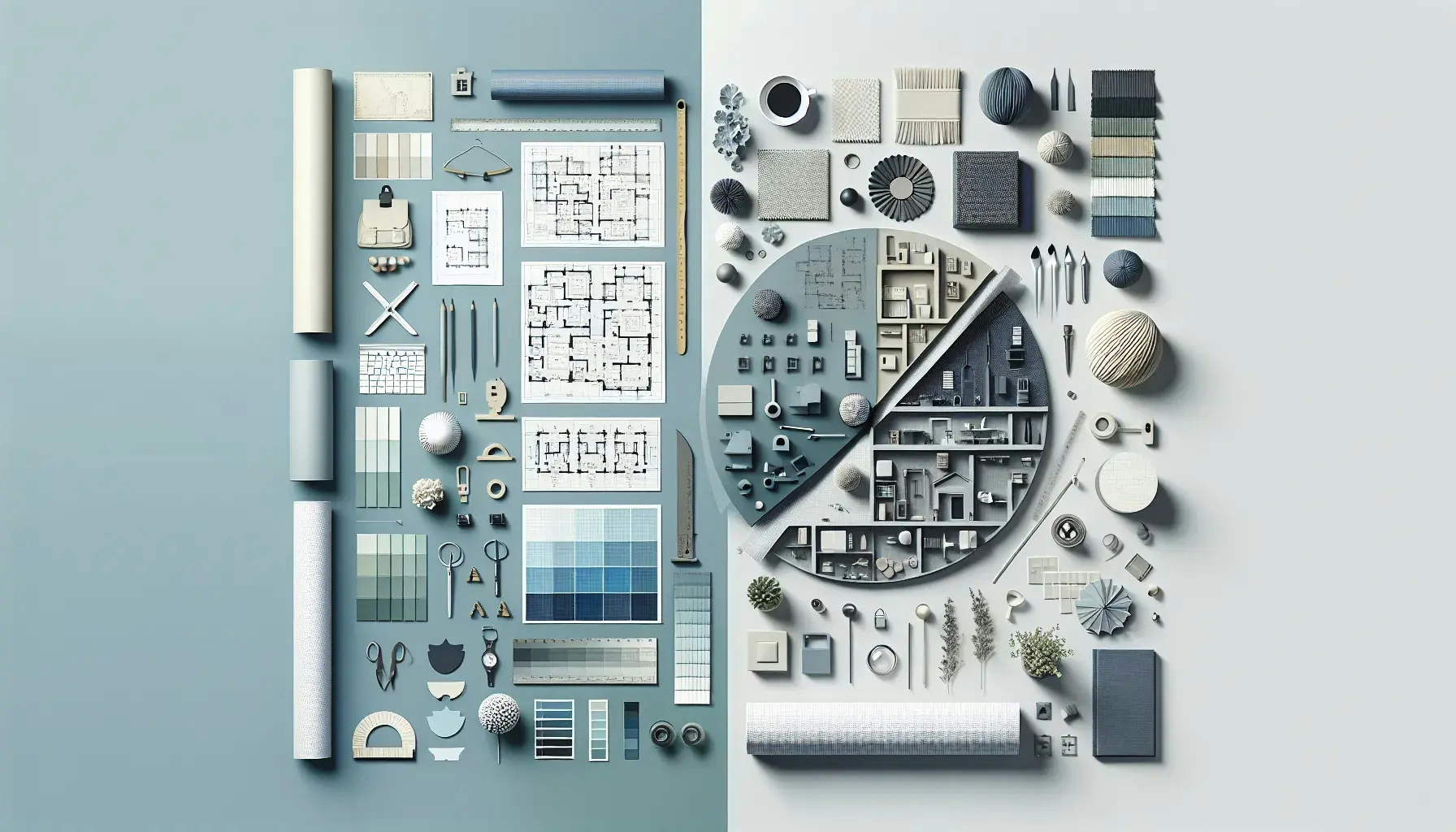Difference Between Architects and Interior Designers
Architect Today

Welcome to our deep dive into the world of design and architecture. In this blog post, we'll explore the key differences between architects and interior designers. While both professions contribute significantly to the creation of functional and aesthetically pleasing spaces, their roles, responsibilities, and areas of expertise differ in several ways. Let's embark on this journey to understand these differences and how they complement each other in the grand scheme of building design and construction.
Defining the Roles: Architects and Interior Designers
Architects and interior designers both play crucial roles in the creation of spaces, but their responsibilities vary significantly. Architects primarily focus on the structural aspects of building design. They create the overall plan for a building, ensuring that it is safe, functional, and compliant with local building codes and regulations.
On the other hand, interior designers are concerned with the aesthetic and functional aspects of indoor spaces. They work on enhancing the look and feel of a space, making it more comfortable, practical, and appealing to the users. They consider factors such as color schemes, furniture placement, lighting, and decorative elements to create a harmonious and inviting environment.
However, the roles of architects and interior designers are not strictly compartmentalized. There is often overlap, and collaboration between the two is essential for the successful completion of a project. For instance, an architect might need to consider interior design elements when planning the layout of a building, while an interior designer might need to understand the architectural structure to effectively design a space.
Educational Requirements and Skillsets
The educational paths of architects and interior designers also differ. Aspiring architects typically need to complete a five-year bachelor's degree in architecture, followed by a two to three-year master's degree. They also need to complete an internship and pass the Architect Registration Examination to become licensed professionals.
Interior designers, on the other hand, usually require a four-year bachelor's degree in interior design or a related field. Some states also require interior designers to pass the National Council for Interior Design Qualification (NCIDQ) exam to practice professionally.
In terms of skillsets, architects need to have strong mathematical and technical skills, as they deal with complex calculations and technical drawings. They also need to have a good understanding of building codes and regulations. Interior designers, meanwhile, need to have a keen eye for aesthetics, color, and design. They also need to be good at space planning and have a deep understanding of materials and finishes.
The Design Process: Architects vs. Interior Designers
The design process also varies between architects and interior designers. Architects usually start the process by meeting with clients to understand their needs and preferences. They then create preliminary sketches and models, which are refined into detailed plans and specifications. These plans are used to guide the construction process.
Interior designers, on the other hand, typically start by assessing the space and discussing the client's needs and style preferences. They then create mood boards and sketches to present their design ideas. Once the client approves the design, the interior designer selects the materials, furniture, and accessories and oversees the installation process.
Collaboration between Architects and Interior Designers
Despite their differences, architects and interior designers often work closely together on projects. This collaboration usually starts at the early stages of a project, where the architect and interior designer discuss the project goals and requirements with the client.
The architect then develops the building design, taking into account the interior designer's input on space planning and design elements. The interior designer, in turn, considers the architectural structure when developing the interior design.
This collaborative approach ensures that the building design and interior design are cohesive and meet the client's needs and preferences. It also helps to avoid potential conflicts and misunderstandings that could delay the project or increase costs.
Career Prospects and Specializations
Both architects and interior designers have a wide range of career prospects and specializations. Architects can specialize in areas such as residential architecture, commercial architecture, landscape architecture, or urban design. They can work in architectural firms, construction companies, or government agencies, or they can start their own practice.
Interior designers, on the other hand, can specialize in residential design, commercial design, hospitality design, or healthcare design, among others. They can work in interior design firms, furniture stores, or real estate companies, or they can start their own design consultancy.
The Impact of Technology on Architecture and Interior Design
Technology has significantly impacted both architecture and interior design. Architects now use software like AutoCAD and Revit to create detailed building plans and 3D models. This not only improves the accuracy of their designs but also allows them to visualize the building and make changes before construction begins.
Interior designers also use software like SketchUp and 3D Studio Max to create realistic renderings of their designs. This allows them to experiment with different design elements and present their ideas more effectively to clients.
Moreover, technologies like virtual reality and augmented reality are now being used in both fields to provide immersive design experiences. These technologies allow clients to virtually walk through the design and experience it in a more realistic way.
Wrapping Up: Architects and Interior Designers - Two Sides of the Same Coin
In conclusion, while architects and interior designers have distinct roles, responsibilities, and skillsets, they both contribute significantly to the creation of functional and aesthetically pleasing spaces. Their collaboration is essential for the successful completion of a project, and their roles often overlap in the grand scheme of building design and construction. Whether you're planning to build a new home or redesign your office space, understanding the differences between these two professions can help you make informed decisions and ensure a successful project.